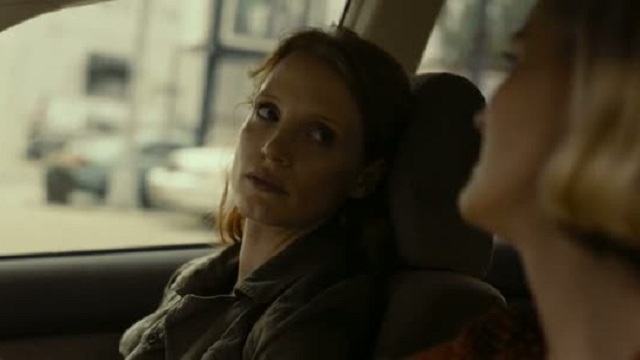In 2014, The Disappearance of Eleanor Rigby was released in 3 formats: Him, Her, and Them. Him and Her were two separate movies meant to be a whole, while Them was a combination of the two perspectives. Leading up to the movies’ releases, critics who had caught Rigby at TIFF couldn’t decide whether to see Him first or Her first, ultimately seeming to land on “either way works.” Because this was the Year of the Man, I chose to watch Her first.
Rigby – Her opens with Eleanor attempting suicide, but doesn’t inform the audience of why. The audience is thrown midway into a story established by Him, and does nothing to helpfully inform the audience of why we’re watching what we’re watching. Eventually, the movie reveals that Eleanor is in the middle of a big divorce with a mid-movie reveal that she lost a son and everybody is goosestepping around the subject. This isn’t a spoiler for Him, as, in that movie, this information is revealed in a timely fashion. If Her is intended to stand alone, Rigby is playing a con game with the audience by transforming Eleanor Rigby into a giant mystery box. Why is she depressed, why did she try to commit suicide, what happened to her?!
The Mystery Box approach to storytelling is akin to, but almost wholly different from, the concept of the Twist and the MacGuffin. The Twist, as one usually accepts it, is when a piece of information suddenly reveals the whole world you’ve been watching is a lie. In essence, you’ve been watching the movie in the wrong way. Perhaps the most famous twist is M. Night Shyamalan’s The Sixth Sense, where a psychic child meets a mentor and then…the movie reveals that the mentor was dead the whole time. The first time through The Sixth Sense, the audience is supposed to believe the mentor to he a living human and not a ghost.
The MacGuffin is a piece of fiction that drives the plot, but is otherwise unnecessary to the overall plot. For instance, the first half of Psycho is driven by an obsession with a stack of money that Janet Leigh steals from her bank at the beginning of the movie. Leigh steals the money, hides the money, counts the money, obsesses over the money…and then is killed for no reason and the money is thrown away with the rest of the evidence of the murder. The money is actually unimportant to the movie, but it still drives the plot forward.
The Mystery Box approach to storytelling, re-popularized by J.J. Abrams, combines the two techniques into a lazy trope of storytelling. J.J. Abrams said of the mystery box that he once bought a box from a trick shop but never opened it. He enjoyed the mystery of the possibilities within the box probably more than he would have enjoyed the box itself. It’s the Schrodinger’s Cat of storytelling devices, where a MacGuffin is implied where there was no MacGuffin before. The goal of the Mystery Box MacGuffin is to first figure out if there is a mystery, then to figure out if that mystery is relevant or important, and finally to figure out what that mystery is. Going back to Eleanor Rigby – Her, the movie treats Eleanor’s depression as a mystery box, where we don’t know if there is a source for it, whether that source is relevant to the movie, and finally what the source of the depression is. In most cases, the device is considered cheap and dishonest because the mystery becomes a stand-in for creating a well-made plot, a developed character, or genuine emotions.
In J.J. Abrams’ world, the Mystery Box also operates as a cliffhanger, enticing you to continue watching the show to find out what the solution is. The cliffhanger is a major piece of unfinished business meant to pull the audience along to the next installment. Lost was a mystery box as cliffhanger for 5 seasons. In Twin Peaks, the identity of Laura’s killer was a mystery box that pulled the audience through the first season and much of season 2. In The Force Awakens, almost everybody is a walking Mystery Box. Why is Kylo Ren such a bitch, and what happened to him as a youth? Why is Luke missing? Who the hell is Rey?
Star Wars never operated on that level. Sure, A New Hope had a MacGuffin in the form of a message from Leia to Obi-Wan, the contents of which are revealed fairly early. Empire ended on a series of Cliffhangers, but not one of them was a Mystery Box. Each entry is relatively self-contained even if the story is supposed to continue in the next movie. With The Force Awakens, Abrams uses a lot of “wait until Episode 8” storytelling to gloss over so many missing parts in Episode 7.
While I think that mystery box storytelling is cheap, creating more of an addiction than a curiosity, I can’t deny it works for a lot of people. Mystery Box isn’t new to modern storytelling, but it seems to be reaching unprecedented heights in the era of serial blockbusters and ongoing tv series. Maybe I’m an old man screaming at clouds.

